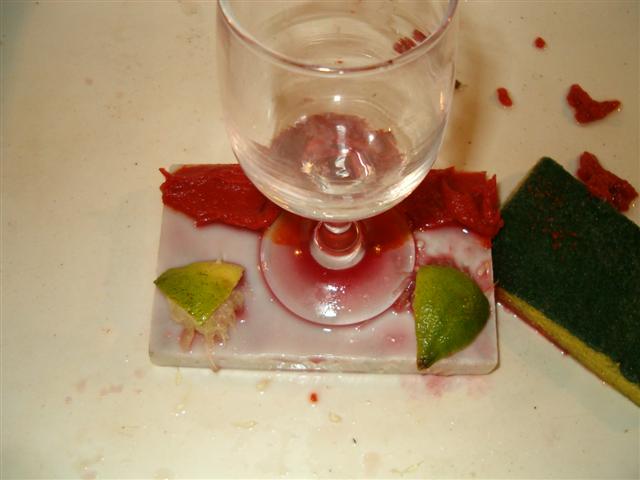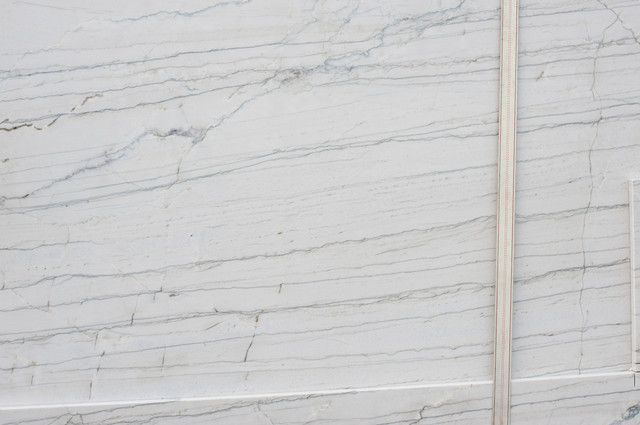In the home decorating world these questions rank up there with other biggies like “What is the meaning of life?”
As a result, many have addressed this topic already and addressed it very well. The folks over at Apartment Therapy have wrestled with it numerous times and have hundreds of pro and con comments on their site. A low-key looking site called The Garden Web is an outstanding source of information with numerous threads on the topic (for instance here,). Searching the web I found amazing posts such as the one from Greg at The Petch House (he’s restoring an 1895 Victorian) in which he tests a piece of marble, both sealed and unsealed, with the its classic nemeses – red wine, acidic fruit and tomato sauce. Two years later, he reports that his counters have held up extremely well without a lot of special care.
So while white marble has a bad rap as being hard to care for, my instincts tell me that while this can be true, it can’t be the whole truth. Marble has been used for centuries for counters, tables and floors and held up extremely well during that time. Personally, a little patina makes everything better in my book. Research around the web, particularly the many first hand accounts in this vein on Garden Web…
“You need to do a search on Marble threads in this forum – there are MANY of us who have marble countertops (mostly honed) and LOVE them and have no staining issues at all.”
…make me optimistic about considering a white marble. Marble is simply calcium carbonate, just like chalk, but in a compressed and crystallized form. It’s the calcium in it that makes it easily etched by acid. But it does seem that sealants have come a long way in the last few years in preventing etching and staining. Honing the counter which is the matte finish I prefer, rather than polishing it to a shine, also helps in the battle against marks.
In terms of choosing what type of marble, trust Joni at Cote de Texas to have covered the choices pretty exhaustively in her post on the subject. She chose Calacutta Ora for her remodel.
But before we rush into the choice, it’s a big enough decision that full research is necessary. As I am not a geologist, it has taken me a while to understand the differences between marble, granite, quartzite and manmade quartz materials such as Silestone, Cambria and Caesarstone. Granite is the hardest of the stones and the most resistant to staining and etching. But it doesn’t come in a true white and tends to be very busy and speckled, as opposed to veined. Quartzite is a metamorphic rock formed from sandstone and tends to be white and greys. It is more stain resistant than marble, but has been known to etch if calcium is present and it is unsealed. That said, when sealed it looks to be a very good option. The different brands of engineered quartz all seem good and hold up to the staining and etching tests, but they look artificial to my eye, certainly in a more traditional kitchen. Cate at Girl Cooks World has done a fantastic (and very recent) post comparing many of the stone and stone like options currently available out there, but we will need to go see them all in person ourselves.
Even after choosing the material we want, in the end, the choice will come down to seeing the exact slab for this kitchen. The variations in the marbles and quartz are so extreme that samples are only indicative, not conclusive. One Garden Web forum poster chose to use Bianco Macabus quartzite because of this exact slab at their stone yard. I can see why.
I’ll keep you up to date on what we discover, but I am hoping to hear from all of you too. The comments on my previous post about the sink and faucet were so helpful.
Related Posts:
Form Versus Function…A Farmhouse Sink and That Perrin & Rowe Bridge Mixer Faucet
Brownstone Kitchen Inspiration From Sheila Bridges




